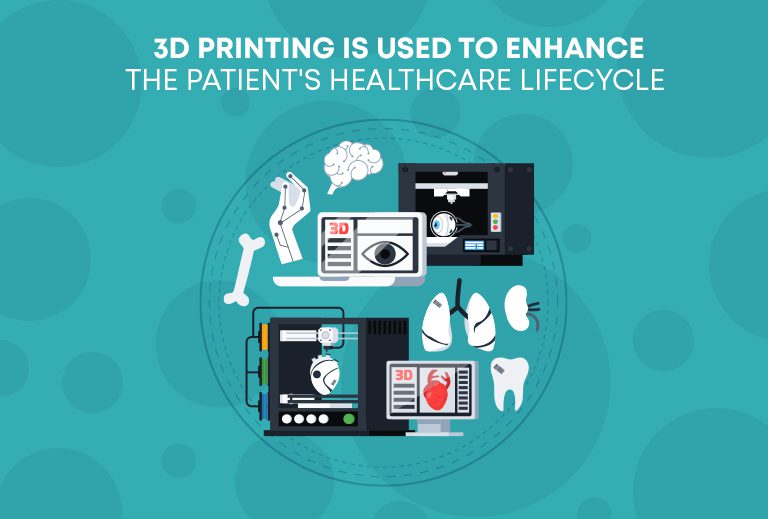How Plastic-enabled 3D Printing Is Driving Personalization In Healthcare
Personalization is transforming the healthcare sector, with focus on tailored treatments that takes into account the patient’s genetic profile, physiology, and response to drugs. There are several technologies that have emerged to facilitate this paradigm shift from a one-size-fits-all approach to personalized medicine. Foremost among these technologies is 3D printing with plastic derivatives helping to lead this charge.
The need for 3D Printing
Every human body is different – no two kidneys, hearts, vertebrae or knee joints are identical. Since every patient is unique, the need for personalized health intervention is paramount. Over the years, rapid strides have been made to develop accurate anatomical models and prosthetics that are highly personalized.
3D printing is used globally to enhance patient care across the healthcare lifecycle, from investigation and planning to post-operative and procedural processes. In prosthetics, for example, plastic-enabled 3D printing can be created to ensure maximum comfort for patients. The geometrical freedom offered by 3D printing ensures that new and complex design structures can be manufactured for stronger prostheses.
3D printing has immensely benefited surgeons, providing them with precise patient-based anatomical models in 3D form. Surgeons can then repeatedly practice the procedure on the 3D model to ensure optimal surgical processes and favorable patient outcomes.
Plastics and 3D Printing
Due to its ease of manufacture, versatility, water resistance and low cost, plastic is used in 3D printing for a wide range of sectors. Since plastic is lighter than its metal equivalents, it is the preferred choice for 3D designers. 3D parts printed from plastic are durable enough to make anatomical figures that can withstand high impact and heat.
Common plastic derivatives used for 3D printing include:
- ABS
Acrylonitrile Butadiene Styrene or ABS is a strong and flexible plastic that’s ideal for prototyping from a 3D perspective. ABS is very popular among 3D printing professionals, thanks to its resistance to high temperature and impact. It can help produce shiny and smooth surfaces that can be joined together through chemical processes.
- PLA
Polylactic Acid or PLA ranks among the most preferred materials used in 3D printing, especially Fused Deposition Modeling or FDM. It is easy to use, environment-friendly and very low warping issues. PLA is also biodegradable.
- ASA
Acrylonitrile Styrene Acrylate or ASA is an all-purpose thermoplastic, perfect for many 3D applications. It possesses similar chemical characteristics to ABS plastic but has better aesthetics and mechanical properties.
- PET
Polyethylene Terephthalate or PET offers similar strength to ABS. It offers good heat resistance, strength, dimensional stability, chemical resistance and water resistance.
- PETG
Glycolized polyester or PETG is a temperature-resistant, durable and impact-resistant plastic used in FDM 3D printing.
- Polycarbonate (PC)
Polycarbonate or PC offers high transparency and impact resistance. It is a strong yet lightweight thermoplastic, ideal for a wide range of 3D printing applications.
The demand for the plastic derivatives highlighted above is going to increase exponentially in the next few years. If you would like to be a part of this 3D printing revolution or have an interest in the plastic industry, then Plastivision 2023 must definitely be in your visit list. To be held from December 7 to 11, 2023, Plastivision is India’s leading plastics exhibition and we look forward to your participation!
Leave a Reply Cancel reply
Recent Posts
- Understanding The Materials That Are Used To Build Plastic Toys
- All You Need To Know About Food-grade Plastics
- A Glance At The Materials That Boost The Performance Of Plastics
- Understanding The Importance Of Exploring New Business Opportunities In The Plastic Industry
- Understanding The Importance Of Investing in R&D For The Plastic Industry
Categories
- 3D Printing
- AIPMA
- Automation
- Automobile Sector
- Bio Plastics
- Environment
- Innovations In Recycling
- Latest Innovations
- Molds & Dies
- News
- Packaging Industry
- Plastic
- Plastic Application
- Plastic Industry
- Plastic Market
- Plastic Myths
- Plastic News From The World
- Plastic Packaging
- Plastic Products
- Plastic Recycling
- Plastic Solar Cells
- Plastic Toys
- Plastic Waste
- Plastic World
- Plastics
- Plastics And Their Applications
- Plastics In Agriculture
- Plastics In Healthcare
- Plastics In Medical Industry
- Plasticulture
- Processing Machinery
- Recycling Machines
- Robotics
- Uncategorized
- Virtual Reality
Archives
- November 2023 (3)
- October 2023 (2)
- September 2023 (3)
- August 2023 (3)
- July 2023 (3)
- June 2023 (3)
- May 2023 (2)
- April 2023 (2)
- March 2023 (2)
- February 2023 (2)
- January 2023 (2)
- December 2022 (3)
- November 2022 (1)
- October 2022 (1)
- September 2022 (2)
- August 2022 (1)
- July 2022 (3)
- May 2022 (3)
- March 2022 (2)
- February 2022 (1)
- January 2022 (1)
- September 2021 (2)
- August 2021 (3)
- July 2021 (4)
- June 2021 (4)
- May 2021 (3)
- April 2021 (2)
- March 2021 (4)
- November 2019 (8)
- October 2019 (8)
- September 2019 (8)
- August 2019 (8)
- July 2019 (8)
- June 2019 (8)
- May 2019 (8)
- April 2019 (8)
- March 2019 (8)
- February 2019 (11)
- January 2019 (8)
- December 2018 (8)
- November 2018 (12)
- October 2018 (12)

